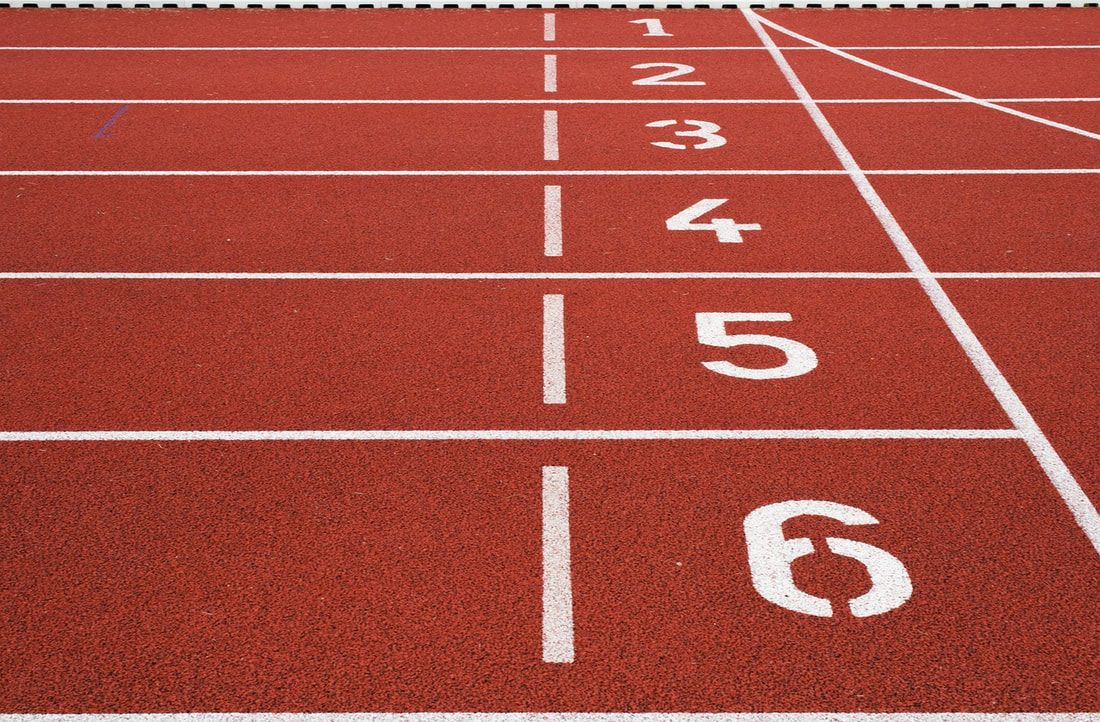|
One of the hardest things to do when work is piling up and the urge of procrastination derail you constantly, is starting. That moment between when you have the intention to do, and actually start doing it, can be agonizing long and prevent you from making progress. But you've probably experienced that if you can get over that initial hump of activation energy required, things go a lot more smoothly from there on. Thus, today I'll talk about a practice you can use to get better at moving past that initial anxiety of starting. I'm not going to pad this with needless banter, because your time is important. Here's the overview of what we're trying to accomplish.
Lower the pain threshold - make the discomfort of starting lessYou cannot do everything right now. You can do something. Holding onto expectations of what it 'should be' is going to set a goal that is intimidating and demotivating. I often say: "Shoulds are swears" Be gentle and don't swear at yourself. It doesn't work with your inner child as much as it doesn't work with actual children. You can acknowledge the difficulty of what's preventing you from starting as a real and valid concern but still choose to do it anyway. The stress of needing to do it will still be there until you do it. So you can literally say (out loud if you want): "I know that this is difficult for me because of how it feels, but getting some of it done will make me feel better than getting none of it done. So I want to do a little to relieve some of this discomfort." Increase the probability of success - set yourself up for a winNobody wants to do something that's pointless, but we've already acknowledged that achieving something is a non-zero result. And the only way a finished product can happen is through a series of adding up non-zero results. But, a big intimidating, impossible goal feels the same as a pointless goal. So we need to break it down. This practice is just about getting good at starting. You know that you can get a lot more done if you can get past this hurdle more often, so by getting better at getting over that challenge, you will literally have more productive time. But, to set ourselves up for a win, we want to make our winning conditions achievable. After we are consistently succeeding, we can raise the bar. Create some forward momentum, and then accelerate. An object at rest, stays at rest. That's a physical law that is fundamental, and I bet you cannot disprove that it has held true for your motivation too. So, to start, we will set a very minimal goal, and then increase it. The two goals we have here are:
Five seconds is all you need. Check out Mel Robbins if you want more convincing. It's a practice of meta-cognitive flexibility to be able to redirect yourself like this. Especially when faced with challenging thoughts and feelings. Instead of giving in to rumination and feeling bad, you accept that those are probably going to happen anyways, but you are still willing to take action to practice moving towards solutions that will fulfil you rather than just dull the pain. Five seconds to start. And only 3-5 minutes on whatever it is that you need to do. If you're super depressed, that could be a shower or grooming. It could be starting a scary email. Whatever it is, you only have to do a little bit. If you can't or don't think that you can manage 5 minutes, start with 3. It's more important to succeed at starting than to achieve the impossible. Get good at starting, and making progress is easier. habit ritual - decide what you're doing when you have more willpowerIt's harder to make a decision when you are under stress. Even a little twinge of fight-or-flight mindset can skew our choices towards actions that will relieve that stress, rather than actually deal with that stress. The brain that is responsible for running away is very loud. It's a panicking screaming little lizard that's afraid of a lot of things. But our higher decision-making capabilities evolved afterwards, and they can see further into the future. Lizards are not as smart as monkeys. Who do you want to be in charge of the show? But the lizard can be comforted by familiarity, and does actually trust the monkey when they insist. So the creation of a habit ritual is basically saying: "Yeah, I know this feels like a threat, but we have a plan, don't worry. If we follow the plan, we can deal with this." And then the lizard goes back to sunning itself on a rock, because really it just wants to be happy and couldn't reason itself through your plan anyways. The plan should include two things:
1. What to do - this isn't even the full plan, it's just where to start. What do you have to do for that initial 5 seconds? Is it going to your desk? Is it getting out a book, pens and paper. Is it grabbing your coat and shoes and a grocery bag? Single smallest step, that's where you have to start. 2. A way to do it - the action needs to last longer than 5 seconds though, but figuring out the next minimal step as you go can usually be decided along the way. Even if that ends up being "Oh, I'm missing this thing. Do I absolutely need it? Yes, then the next step is to get that thing". But the way to keep doing is to have a habit that keeps you moving for that 3 or 5 minutes. And the smallest required thing there is: keeping track of time! This can be a timer on your phone/desktop/watch, or merely just the practice of noting what time it is you start on a piece of paper. Having a physical trace of it is essential, not only for the effect of a somatic behaviour (actual physical movement to do the thing) but it demarcates in your reality the line between the ritual habit of doing and not doing. You only are committing to do for within that time frame, everything else is bonus. Committing to doing everything all the time is scary and exhausting, stop it. Just commit to getting good at doing this small chunk, and then put as many of them in a row as you want, and voila, productivity. You can of course start to increase the time window. I started at 5 minutes, and I still use the technique when I'm feeling a lot of resistance to doing something that I won't enjoy (like taxes and stuff), but will start at a minimum of 25 minutes (a pomodoro, basically) or even longer if it's crunch time. Do not start at the expectation that you can work at crunch time rates when you're a stationary rock. Unless you can somehow prove to me with evidence not excuses, I do not believe it's possible. Okay, we've got a starting point, and a timer, but how do we stay on task for the timer? Good question, which leads us to... Avoid exit points - identify failures and build alternativesYou've psyched yourself up, you've done the most important part of getting ready and starting your timer, your hands are on the keyboard and... something happens. It might be fear, guilt, shame, panic, worry, rumination, projection, a freaked-out lizard screaming that it's hair is on fire (shh lizard, you didn't evolve hair, c'mon be reasonable), whatever. Thoughts and feelings as internal distractions AND/OR notifications, changes in your surroundings or whatever external happenings will happen as external distractions. We need to be able to stay on track in the face of these, otherwise we're back at the starting line and have to overcome the resistance to starting again. And while that may be good practice, it can be exhausting when we already had to psyche ourselves up to get past the hump the first time. And here's the kicker: Notice when a distraction happens When you start to get distracted, make a note of it.: As in - literally write it down. Do not pass go, do not do anything else. You get distracted, you immediately note it. And then you resume doing what you wanted to do for the rest of the timer, or until the moment in which you notice another distraction. For this I recommend the following methods:
This feedback loop requires that you maintain some level of focus for awareness when distractions happen. If that's difficult, then set the goal as something smaller. You can go as low as a minute or 30 seconds for your timer if you are not catching distractions. Sometimes, it's unavoidable that a distraction carries us away and we find ourselves thinking or doing something else. At that time, the moment that you notice it, note that as a distraction and come back to what you were doing. It is imperative that you never do this: You're working along steadily, and then the urge to check social media strikes, dilligently, you note the distraction, but then you switch over to the social media anyways, as your work timer is still running. This is not the method, and if it happens, stop the timer completely or start over. If not, you'll just be creating a new habit of noticing that you're distracting, but not investing in yourself enough to create a way out of distraction other than following them. Thus, the exit point we're trying to avoid here is all the habitual reactions and distractions that tend to take us away from staying on task. Instead of following those, we have committed to staying on task for the duration of the timer, and are replacing those behaviours all with the simple noting of their existence. Some methods recommend that you write your distractions down so that you can deal with them later, but I find that this just takes you out of the task flow. If they were important, you will still remember them a few minutes from now. And the alternative is the new behaviour of just noticing. The distractions will always be there, but you are building the capacity through practicing that you can defer those at will. Reinforce positive behaviourIf you get distracted, you win points. Hooray, everyone is a winner! No but seriously, good luck getting through it without getting distracted. If you think you can, then up the difficulty. Nomie specifics:
It's my favourite tracking app, and allows for many different styles of trackers (increments, on/off per day, timers, numerical entry, notes, etc). For use in this method you'll need to set up two distinct trackers. One as a timer, and the other as your distraction avoidance counter. For distraction avoidance you could set it to increment (if you are manually tapping for each distraction) or a numerical entry. I find that the tapping is the most effective because you are making a response in your body as a reaction to the distraction instead of your habitual avoidance behaviours. However, depending on how you have your device set up, it may go to sleep / lock / dark screen when the timer is still running but it's been too long in between noting a distraction. If that is the case, it increases the amount of time that it would take to record a distraction (instead of just a single tap and then back to the action, it would be a tap, then unlocking, then another tap). That's less ideal for staying in flow, which is the best outcome here, and you can get there with this, really. So, if the phone sleeping thing becomes a problem for you, just make the note of distractions elsewhere and then enter your results numerically at the end. Paper or a simple text app (if you're doing computer work). This exercise is an adaptation from an Acceptance and Commitment teaching practice by Russ Harris (Oct 02016) called "Dropping the Anchor". CC3.0-NC-BY-SA Practice first when you are not feeling stressed, so that you can use it when you need the extra strength. Start by imagining your emotions swirling around you like a furious stormy sky: clouds, wind, movement. It's hard sometimes not to get swept up in the pain, fear and discomfort. But you can stay with it. The primary purpose of this exercise is not to distract ourselves from the storm. Because trying to force it into a bottle has just led to a lot of exploded bottles, and additional glass shards in the storm - making it worse. So we will instead experience our feelings a little bit more at a time, through the visualization of a storm. Connect first with that imagery, and then acknowledge them as symbols of your difficult feelings. With courage and recognition that your will has the ability to make changes in patterns of behaviour, we face the storm. In the midst of the turmoil and unrest, you create steadiness. You regain your center to regain control of your actions. Imagine these happening, so that you can engage in behaviour that leads to a more positive future. The storm swirls. Acknowledge to yourself that you are hurting, label the feelings that are happening: anxiety, fear, guilt, etc. You are still here in the core of this, and the storm is happening to you. It is not you. Resolute to stay with it, you drop the anchor. Press your feet down into the floor, grounding you. Place your hands together in a way that is meaningful/appropriate for you: palms together, in prayer, just fingertips. My preference for this the hands clapsed one on top of the other, with the heels of the hands touching. Push your hands together firmly, but not so much that it hurts in any way. Create solidity and firmness, not a feeling of pain to displace the originating discomfort. Visualize a structure made in your body, combining the posture of your arms and shoulder, with the pushing down of your feet, making you feel very steady and solid. Exhale completely and sink into this heavy solidity, a psychic force of weight thudding down to the bottoms of your feet. For me, the image comes to mind of a great big cartoon lead weight, like the type dropped on Wile E Coyote. But use whatever dense, heavy thing in imagery you like best: an anvil, anchor, boulder, gold bar, asteroid, etc. Whump! Down and solid amidst the storm. Okay, now that we are fixed and steady in the present. Observe the storm.
Start with listening, what sounds do you hear first? What else? Look further. Now what's in the background? Between the sounds? Open yourself to hear them all at once, separate and together. Thoughts, memories and feelings may continue to arise. Coming at you from out of the storm. Listen in order to acknowledge they are saying things, but just let them be. You don't have to answer them right now. But note that they are happening. Let the storm whip them away, as you rest here, solid. And be open to paying attention to others as they come. Open to your physical sensations again. Your feet on the floor, your shoulders relaxing into the steadiness of your structure - when you are heavy and established again it is relaxed and can be effortless to maintain. Now, what do you see? Notice things about where you are. Try to open your visual attention so that you are able to inspect your peripheral vision without moving your eyes too much from the direction that you are facing. What were you doing? Acknowledge that you are exerting your will doing this exercise here, in the midst of a storm, solid in its swirling. What will you do now? Slowly and intentionally, do a small next step on what you wanted to do. You maybe cannot do everything right now, just start where you can. If the storm rises up and is difficult to bear, take a moment to breathe and visualize your solid shape in the storm, slowly opening again to the storm's sensation, the reality around you, and your engagement in the actions of moving forward. By opening our awareness to the experience of the many sensations that are happening in our emotions and reality - The storm and anchor plants you firmly in your present moment experience. This practice is so that you can engage in behaviour that leads to the positive action, and the ability to do so in the face of difficult emotions. Are you willing to: being, feeling and doing in the present moment? If this practice works for you, it would really help me out if you could share it with a friend or with someone who might need it. Thanks, and best wishes. Aaron :) Citation "The single most powerful technique for extreme fusion" Russ Harris 2016 www.ImLearningACT.com retrieved from https://www.actmindfully.com.au/ January 2018 |
AuthorAaron Ball. Recovered Academic. Grieving Environmentalist. Evidence-Based Transformational Coach. Electronic musician. Transrationalist. Archives
August 2022
Categories |




 RSS Feed
RSS Feed